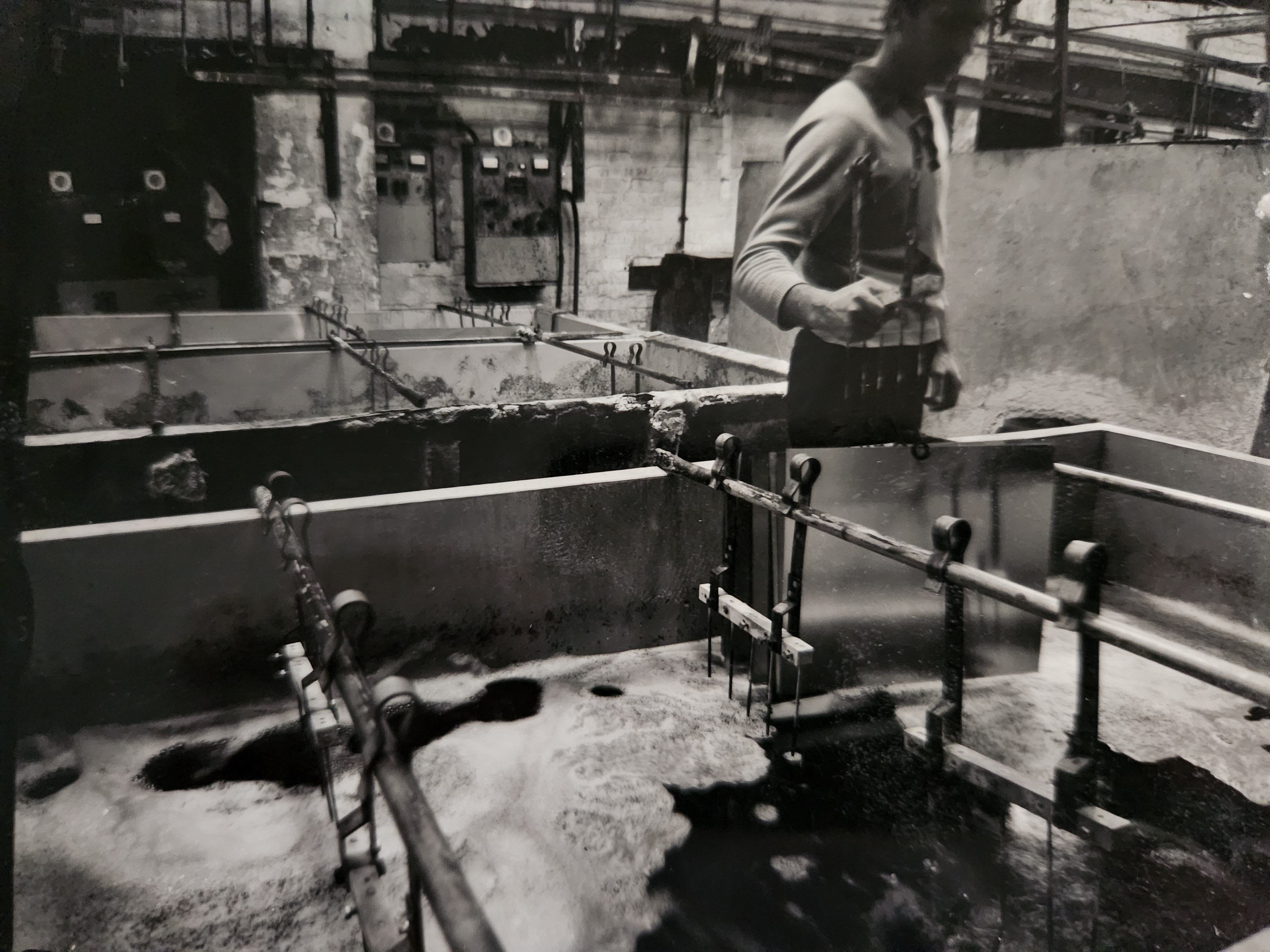
The Timeless Art of Anodising
In the world of metal finishing, anodising holds a unique place, revered both for its functionality and its aesthetic appeal. Over the decades, while many industrial processes have been revolutionised by technology, anodising has remained largely unchanged, standing as a testament to the blend of science and art that defines it.
A Legacy of Simplicity and Precision
At its core, anodising is a relatively straightforward electrochemical process. It involves submerging a metal part, most commonly aluminium, in an electrolytic bath while applying an electrical current. This process thickens the natural oxide layer on the metal's surface, enhancing its durability, corrosion resistance, and aesthetic appeal. You might have learned this process in a physics class at school (or was it in chemistry?). No matter. Despite the advent of new materials and technologies, the fundamental steps of cleaning, anodising, colouring, and sealing have remained remarkably consistent over the years.
The beauty of anodising lies in its simplicity. The basic principles established when the process was first developed in the early 20th century still hold true today (see the photo from our 1970s archives below, and next to it, a current image).
This continuity is not a sign of stagnation but rather a recognition that some techniques are perfected early on. Anodising is one such technique, where the combination of chemistry and electricity creates results that are as reliable as they are beautiful.


Where Science Meets Art
While the anodising process is grounded in science, there is an undeniable artistry involved in its execution. The metal surface serves as the canvas, and the anodiser must carefully control every variable to achieve the desired outcome. The interplay of voltage, current, temperature, and time determines the thickness and quality of the oxide layer. Each adjustment can subtly alter the final appearance and performance of the anodised metal.
 The art of anodising extends beyond mere technicalities. This process enables the creation of an impressive array of colours, ranging from deep bronzes and rich golds to vibrant reds and blues. This colouring is not merely a matter of mixing dyes; it necessitates a nuanced understanding of how different alloys and anodising conditions interact to produce specific hues. For those who excel at it, anodising embodies as much creativity as it does chemistry.
The art of anodising extends beyond mere technicalities. This process enables the creation of an impressive array of colours, ranging from deep bronzes and rich golds to vibrant reds and blues. This colouring is not merely a matter of mixing dyes; it necessitates a nuanced understanding of how different alloys and anodising conditions interact to produce specific hues. For those who excel at it, anodising embodies as much creativity as it does chemistry.
The artistic nature of anodising is especially evident in decorative applications. LNI designers have long prized anodised finishes for their ability to deliver both durability and beauty, as have our customers. Whether it’s the solid and dependable VIN plate or the luxurious finish on a consumer electronic device, anodising provides a surface that is not only protective but also visually captivating. The depth and richness of anodised colours, combined with the metallic sheen of the underlying metal, offer a unique aesthetic that is difficult to replicate with other finishing processes.


An Enduring Craft in a Changing World
In an era where technology rapidly changes how we manufacture and design, anodising remains a process steeped in tradition. While some aspects have been refined and improved, the core of anodising has stood the test of time. This is not to say that advancements haven’t been made - modern anodising techniques can achieve greater consistency and offer a wider range of colours than ever before - but the essence of the process has stayed remarkably true to its origins.
LNI craftsmen in a mass manufacturing world
This nature of anodising reflects its dual identity as both a science and an art. It’s a process that rewards precision and experimentation in equal measure, where the best results come from a deep understanding of both the material and the method. The LNI craftsmen are an enduring part of the LNI team offering a true craft to the often time machine lead manufacturing process. They are a testament to the fact that anodising is more than just a finishing technique, it is a craft that has been honed over decades. It is this blend of science and artistry that continues to inspire those who practice it, offering a timeless solution that is as relevant today as it was when it was first developed.
Whether viewed through the lens of functionality or aesthetics, anodising remains a process where tradition meets creativity, and where the old ways still shine with enduring brilliance.
Read more about Anodised Nameplates - are they all made equal? >
Contact the specialists at LNI to discuss what is the best solution for your product. All our products are Australian-made, designed, and manufactured. Request a quote from LNI today.
.svg)






